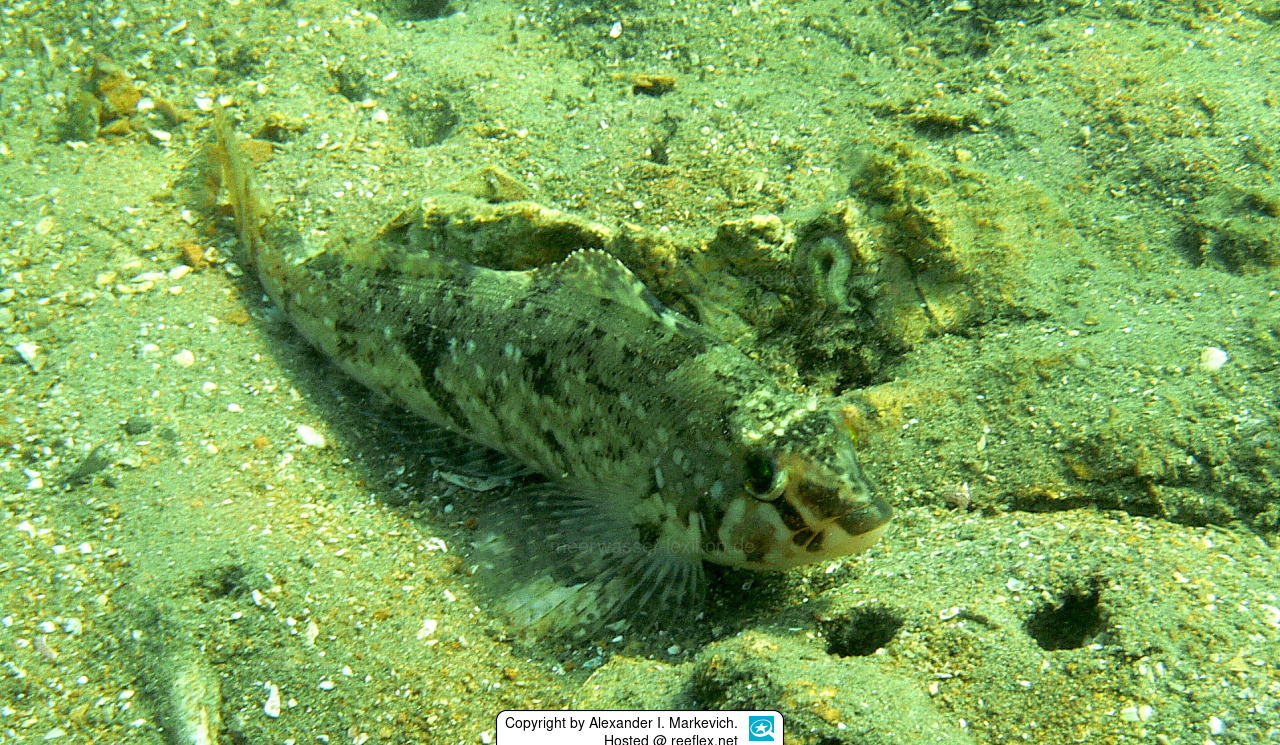Info
We would like to express our special thanks to Alexander I. Markevich, who kindly sent us the first photos of Hexagrammos octogrammus.
The mask greenling is a cold-water fish that prefers to live in shallow rocky coastal areas, where it is quite likely to get caught on the hooks of anglers.
The cornea is heavily pigmented when exposed to bright light, but becomes colorless in the dark.
Hexagrammos octogrammus has a special feature, it is able to change the color of the eye cornea, caught at night or at night, the corneas are dark, during the day collected specimens or animals that are in a well-lit aquarium show a light orange or dark red eye cornea.
The photoreceptors of the greenling contain only or presumably only porphyropsin with a small admixture of rhodopsin in summer.
It has been demonstrated that the complete discoloration of the cornea occurs through the movement of orange and yellow carotenoid pigments in the specialized chromatophores with long extensions that shade the pupil zone.
These changes can take about 1 to 2 hours depending on ambient light and temperature.
Such unusual corneal chromatophores were probably first described in the spotted rockfish (Cottus bairdii Girard, 1850).
Greenlings are known for the fact that the males protect the egg clutches, they aerate the clutches and pick out unfertilized or moldy eggs.
During the time of guarding, these eggs are the main food of the males.
Fish that approach the clutch to steal eggs, e.g. juvenile fish of the pricklehead Sebastes taczanowskii, are aggressively chased away. However, the eggs are highly prized by other, more difficult-to-chase-away sea creatures: the sea urchin Mesocentrotus nudus (A. Agassiz, 1864) and the starfish Patiria pectinifera (Muller & Troschel, 1842) often eat large parts of the clutches, and the Greenling's bites are ineffective here.
Greenlings like Hexagrammos octogrammus are commercially fished and some are also kept in cold-water aquariums.
Hybridizations between Hexagrammos octogrammus x Hexagrammos otakii have been documented several times in Peter the Great Bay.
Synonyms:
Chirus ordinatus Cope, 1873 · unaccepted
Labrax octogrammus Pallas, 1814 · unaccepted
Octogrammus pallasi Bleeker, 1874 · unaccepted
The mask greenling is a cold-water fish that prefers to live in shallow rocky coastal areas, where it is quite likely to get caught on the hooks of anglers.
The cornea is heavily pigmented when exposed to bright light, but becomes colorless in the dark.
Hexagrammos octogrammus has a special feature, it is able to change the color of the eye cornea, caught at night or at night, the corneas are dark, during the day collected specimens or animals that are in a well-lit aquarium show a light orange or dark red eye cornea.
The photoreceptors of the greenling contain only or presumably only porphyropsin with a small admixture of rhodopsin in summer.
It has been demonstrated that the complete discoloration of the cornea occurs through the movement of orange and yellow carotenoid pigments in the specialized chromatophores with long extensions that shade the pupil zone.
These changes can take about 1 to 2 hours depending on ambient light and temperature.
Such unusual corneal chromatophores were probably first described in the spotted rockfish (Cottus bairdii Girard, 1850).
Greenlings are known for the fact that the males protect the egg clutches, they aerate the clutches and pick out unfertilized or moldy eggs.
During the time of guarding, these eggs are the main food of the males.
Fish that approach the clutch to steal eggs, e.g. juvenile fish of the pricklehead Sebastes taczanowskii, are aggressively chased away. However, the eggs are highly prized by other, more difficult-to-chase-away sea creatures: the sea urchin Mesocentrotus nudus (A. Agassiz, 1864) and the starfish Patiria pectinifera (Muller & Troschel, 1842) often eat large parts of the clutches, and the Greenling's bites are ineffective here.
Greenlings like Hexagrammos octogrammus are commercially fished and some are also kept in cold-water aquariums.
Hybridizations between Hexagrammos octogrammus x Hexagrammos otakii have been documented several times in Peter the Great Bay.
Synonyms:
Chirus ordinatus Cope, 1873 · unaccepted
Labrax octogrammus Pallas, 1814 · unaccepted
Octogrammus pallasi Bleeker, 1874 · unaccepted







 Alexander I. Markevich, Russland
Alexander I. Markevich, Russland








